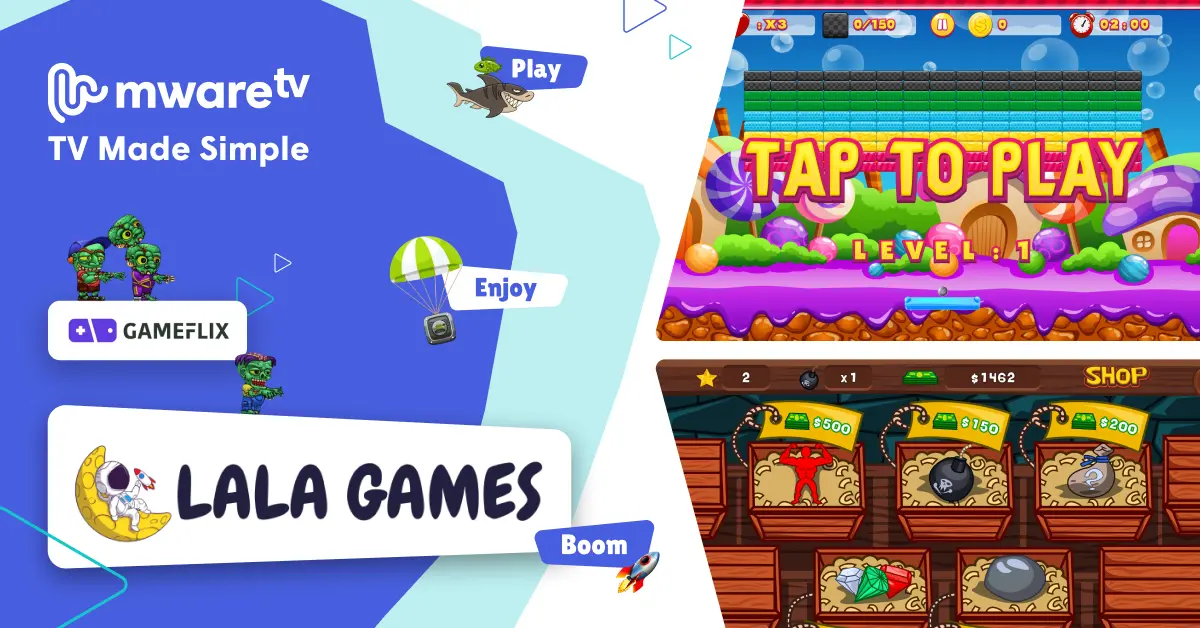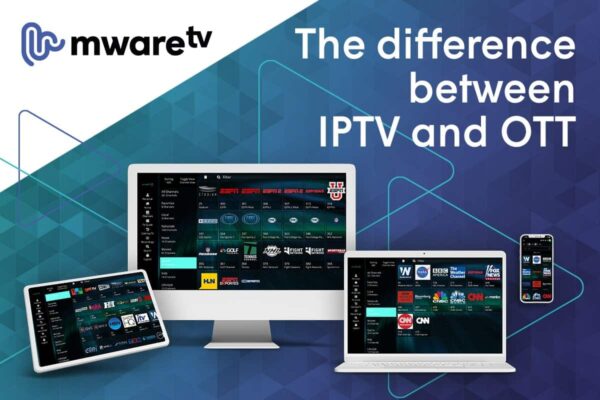
The difference Between IPTV and OTT

What is IPTV?
IPTV stands for Internet Protocol Television. IPTV is a traditional TV service that uses an internet connection to deliver television channels to your home. It’s similar to how cable works today — you get a box or set-top box from your provider (like DirecTV) and connect it to your TV via HDMI or coaxial cable. Then you can watch live programming on any connected device in the house by logging into your account. The content is transmitted over a private network managed by the IPTV service provider.
What is OTT?
OTT stands for Over-the-Top. It is a digital streaming service that delivers video content over the internet to viewers. OTT is typically delivered through a streaming device such as a smart TV, tablet, or smartphone. Unlike IPTV, OTT does not require a Set-top box or a private network managed by the service provider. Instead, the live television, video on demand (VOD), and catch-up TV content is delivered over the open internet, and viewers can access it from anywhere in the world. Good examples are Netflix and Disney+.
What about Multicast and Unicast?
Talking about the differences between IPTV and OTT, you often hear references to multicast and unicast. Unicast and multicast are two different methods for transmitting data over a network, including video content for IPTV and OTT services.
Unicast refers to a one-to-one transmission method, where data is sent from a single source to a single destination. In the context of IPTV and OTT, unicast is used to send individual streams of video content to each viewer’s device. Each viewer’s device establishes a connection with the service provider’s server and receives a separate stream of data. Unicast must be used to facilitate devices like mobiles, tablets, media players like Roku, FireTV and AppleTV and most of the time, SmartTVs.
Multicast, on the other hand, is a one-to-many transmission method where data is sent from a single source to multiple destinations simultaneously. In the context of IPTV, multicast is often used to deliver live television broadcasts, where the same content is being viewed by many viewers at the same time. Rather than sending individual streams of data to each viewer, multicast allows for a single stream of data to be sent to multiple viewers simultaneously.
Multicast is not used for OTT delivery as the content is more personalized and specific to each individual viewer’s preferences, making it more suited to unicast delivery. Additionally, multicast requires specialized network infrastructure and support from Internet Service Providers or cable operators, which can be difficult to implement and maintain. Multicast generally needs a Set-top box at the end user location to receive and decode the digital signals and display the content on the TV.
As the market expects support on multiple devices like large TV screens and mobile devices, operators generally rely on unicast delivery to deliver video content to individual viewers.
The primary difference between IPTV and OTT
The most significant difference between IPTV and OTT is the delivery method. IPTV uses a private network managed by the service provider, e.g. an Internet Service Provider (ISP) to deliver content, while OTT uses the open internet to deliver content to be used on any place anywhere (e.g. Netflix).
OTT content is delivered over the same IP network that is used to deliver other internet services, such as email and web browsing. Unlike IPTV, OTT content can be accessed from a variety of devices, including smartphones, tablets, and smart TVs, without the need for a dedicated set-top box. OTT content is typically delivered through apps or websites that are installed on the viewer’s device.
Mware TV IPTV and OTT solutions
MwareTV offers solutions for both types of technologies and projects. If you would like to have a call to discuss the differences between IPTV and OTT in more detail and which approach is the best for your project, ask for a consultation with our experts.



